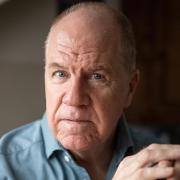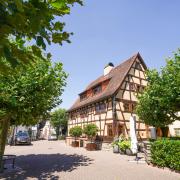In the month when we mark the 100th anniversary of the end of the First World War, STEVE ROBERTS highlights the terrible cost in human lives it inflicted on the county of Devon

After more than four years of war, the guns fell silent at the eleventh hour of the eleventh day of the eleventh month. It was 11 November, 1918, 100 years ago, and the First World War was finally over after more than 1,500 days of attrition. What did the war’s prosecution and its end mean, however, to the people of Devon?
You begin to comprehend the carnage of the First World War when you learn that there is not one Thankful Village in the county. These were the fortunate communities that lost no servicemen in the war, when all around them did. Not one village or town in Devon was spared.
The Devonshire Regiment raised 25 battalions during the war, fighting on the Western Front against Germany and in other theatres against Germany’s allies, Austria-Hungary, Turkey and Bulgaria. The regiment was awarded 65 battle honours and two Victoria Crosses by war’s end, plus 1,265 other gallantry awards and mentions in despatches.

The 1st and 2nd Battalions took part in that famous Christmas truce on the Western Front in 1914. That was scant respite, however, from a long slog that included most of the major Flanders’ battlefields: the Ypres battles (including Passchendaele), Loos (the major British offensive of 1915), the Somme (ditto, 1916), and the costliest battles of all in 1918, as the Allies finally pushed the Germans back.
The 1st Battalion landed in France on 21 August, 1914, just 17 days after Britain’s entry into the war. It served on the Western Front throughout. At 1st Ypres (October-November 1914), the battalion lost two thirds of its officers and a third of its other ranks.
The 8th and 9th (Service) Battalions went into action on the first day of the Somme. The 8th was committed within three hours of the commencement of the offensive and suffered 639 casualties on that first day.

The 9th meanwhile was one of the few British units attaining its initial objectives on the first day (but lost 463 dead or wounded out of 775 who went over the top). There is a dedicated Devonshire cemetery at the Somme. The memorial states: “The Devonshires held this trench. The Devonshires hold it still.”
The Devonshire Regiment was involved in the fighting from virtually beginning to end and the human cost was high, over 6,000 men killed and about three times that number wounded. The volunteer army of 1914-15 included many Devonians, who didn’t all serve with the Devonshire Regiment. There was also the Royal 1st Devon Yeomanry and Royal North Devon Yeomanry, both of which fought at Gallipoli, against the Turks.
In total over 11,500 Devonians were lost, some with the Devonshires, but others with numerous, disparate regiments. What bound them together was a determination to fight for King and Country.

Sometimes they were groups of mates who lived and worked together, such as the eleven Devon-born Great Western Railway (GWR) footplate men, who all died. Their ages add some credence to the oft-quoted mantra that a generation of young men was wiped out by war.
Three of them were just 19, including Reginald Connett, who died on the first day of the Somme, the worst single day in the history of the British Army. Another six were aged 21-23. The oldest was just 31.
The initial enthusiasm for war soon faded as casualties mounted: conscription was introduced in 1916. Devon began collecting its roll of honour from September 1914, recording the names of the dead. The original idea was for a memorial inscribed with all the names in Exeter, but the sheer volume made this impracticable. In the end a 396-page book was used to record the names of 11,601 men and women.

Devon was spared the horrors of bombing during the First World War, being safely out of range of German Zeppelins and Gotha bombers, however, that didn’t mean there was no danger.
Only last year a 25lb shell from the Great War was detonated on a farm at Bovey Tracey, after workers found the monster embedded in a wall they were demolishing. Bomb disposal experts confirmed this was not unusual: it was posited that the bomb came from old wartime firing ranges on Dartmoor.
How the bomb ended up on the farm remains a mystery, but it was reputedly once used as a hefty (and dangerous) door stop!

The county was directly impacted in other ways. The enormous war effort needed supporting: this was arguably the first ‘total war’, in which the whole nation mobilised.
The Heathcoat fabric factory in Tiverton, the town’s largest employer in 1914, was one of many switching to munitions production. As an exporter, it had little choice with the loss of continental markets, however, those war contracts more than made up. With many men away fighting it was women making up the shortfall by working the machines.
Devon, with its mix of industry and agriculture, also saw the advent of the Women’s Land Army. One of the key figures in advocating women’s land work was Miss Sylvia Calmady-Hamlyn, a member of a long-established Devon family, based on Dartmoor’s edge, who was heavily involved in creating the new Women’s Land Army and became a governor of Seale-Hayne College, three miles from Newton Abbot, where a training course was established.

One big idea was the ‘women-only farm’, proving to sceptics that ladies could do every job required. The first of these was at Great Bidlake Farm, close to Sylvia’s own home in Bridestowe. A forewoman and three other girls were established there. The farm took on college duties too when Seale-Hayne’s buildings were needed for a military hospital.
One village, Silverton, some eight miles from Exeter, lost 39 men, including seven at the Somme, from a village of around 1,000. There were familial tragedies, for example, one household losing two sons in a fortnight. With so many men away, the impact on the village was manifold, as women worked on local farms and munitions in nearby towns (including presumably Exeter). It is just one illustration from many.
There was a mood after the war, of course, to honour the fallen and support the survivors. Virtually every one of Devon’s myriad of parishes has a memorial, dedicated originally to the dead of the war (but sadly with other names added subsequently).
This November Devon’s war memorials will once again be the focus for Remembrance, with added poignancy as we recall the end of a shattering conflict that finally ground to a halt 100 years ago after levels of death and destruction that would inhabit people’s worst nightmares for years to come.
Some people may still venture to ponder why we bother remembering a war from so long ago: if you could count the 1914-1918 names on all Devon’s war memorials you’d find over 11,600 very good reasons.
_________________



























